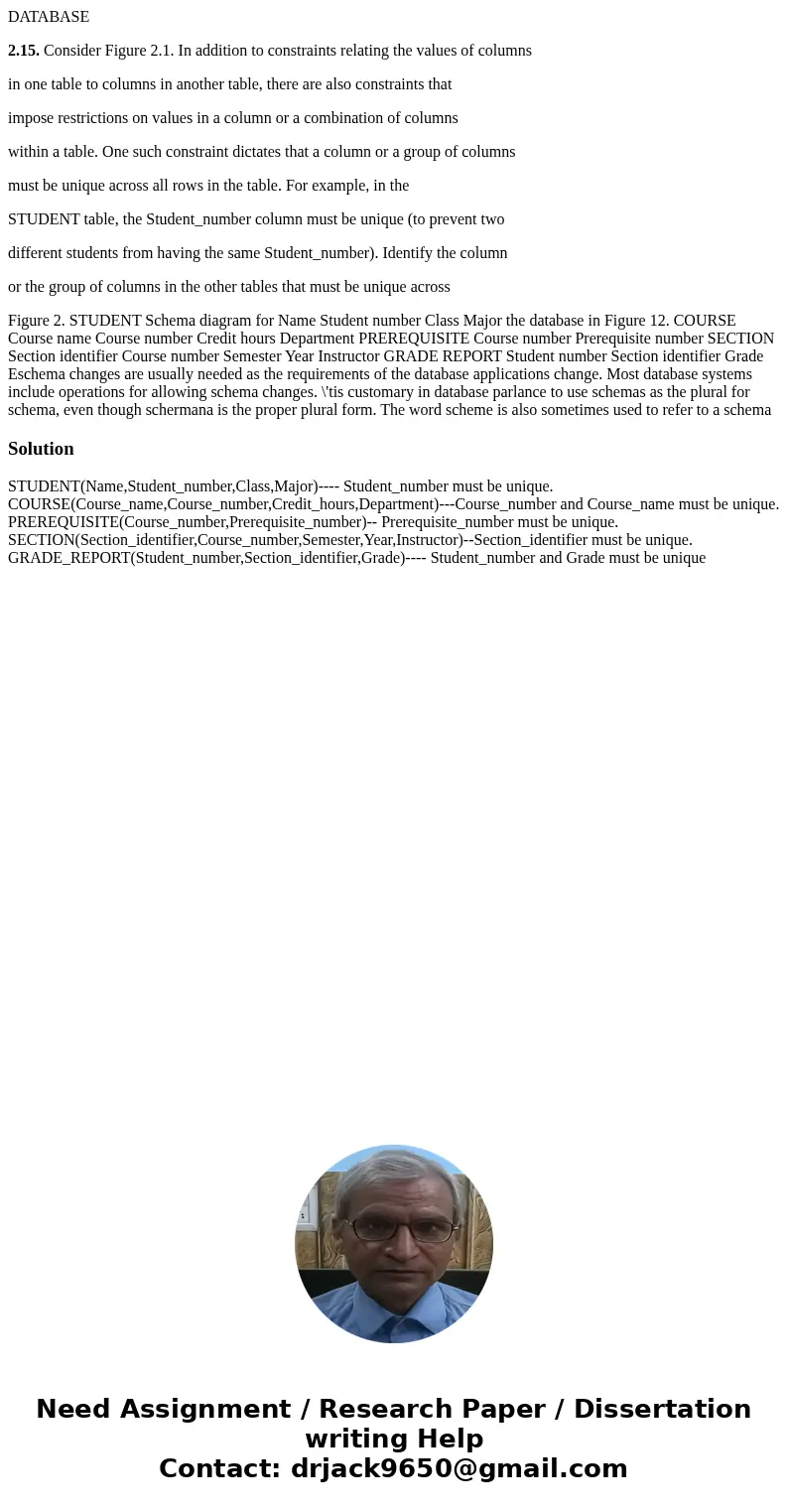DATABASE 215 Consider Figure 21 In addition to constraints r
DATABASE
2.15. Consider Figure 2.1. In addition to constraints relating the values of columns
in one table to columns in another table, there are also constraints that
impose restrictions on values in a column or a combination of columns
within a table. One such constraint dictates that a column or a group of columns
must be unique across all rows in the table. For example, in the
STUDENT table, the Student_number column must be unique (to prevent two
different students from having the same Student_number). Identify the column
or the group of columns in the other tables that must be unique across
Figure 2. STUDENT Schema diagram for Name Student number Class Major the database in Figure 12. COURSE Course name Course number Credit hours Department PREREQUISITE Course number Prerequisite number SECTION Section identifier Course number Semester Year Instructor GRADE REPORT Student number Section identifier Grade Eschema changes are usually needed as the requirements of the database applications change. Most database systems include operations for allowing schema changes. \'tis customary in database parlance to use schemas as the plural for schema, even though schermana is the proper plural form. The word scheme is also sometimes used to refer to a schemaSolution
STUDENT(Name,Student_number,Class,Major)---- Student_number must be unique. COURSE(Course_name,Course_number,Credit_hours,Department)---Course_number and Course_name must be unique. PREREQUISITE(Course_number,Prerequisite_number)-- Prerequisite_number must be unique. SECTION(Section_identifier,Course_number,Semester,Year,Instructor)--Section_identifier must be unique. GRADE_REPORT(Student_number,Section_identifier,Grade)---- Student_number and Grade must be unique
 Homework Sourse
Homework Sourse